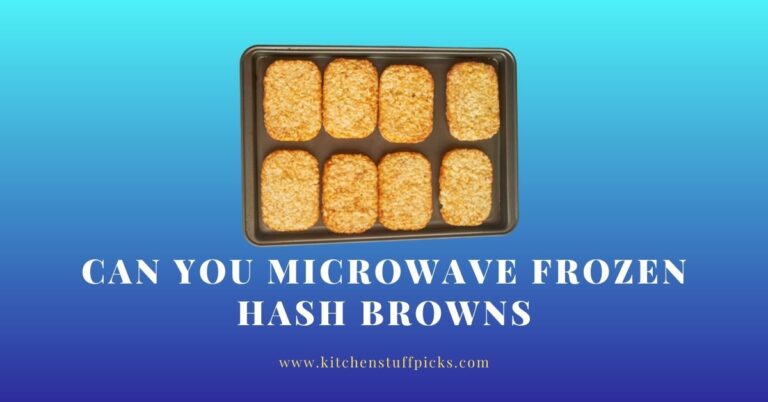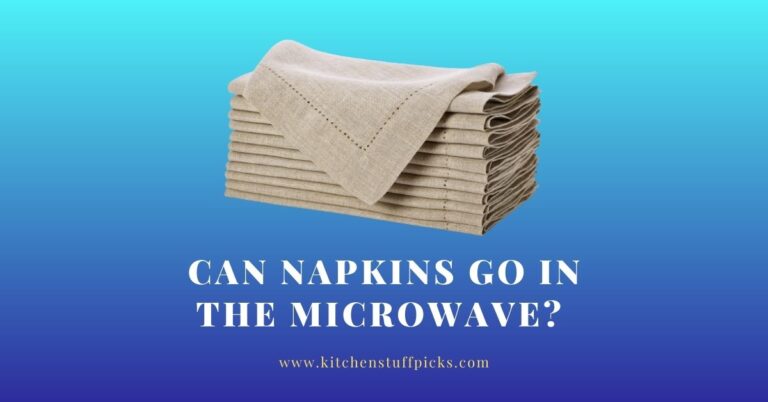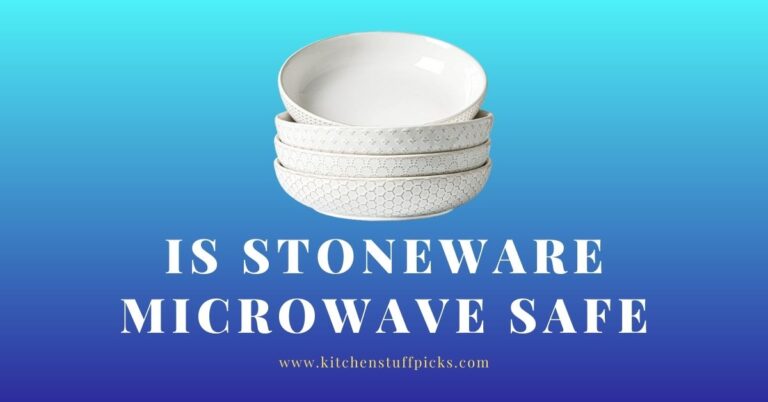Cooking Hacks: Can You Microwave Vacuum Seal Bags?
Vacuum-sealed containers and microwave ovens have become vital kitchen companions in a society where convenience and efficiency are important. The combination of these two developments, however, presents an important question: Can You Microwave Vacuum Seal Bags?
Let’s go on a culinary adventure to learn about the benefits of vacuum-sealed bags, the rise of the microwave oven, and the safety considerations that come with their peaceful coexistence. Consider extending the freshness of your vegetables and leftovers without worrying about spoilage or freezer burn.
Vacuum-sealed bags are hailed as culinary marvels because they provide an airtight barrier that seals in flavour, nutrition, and texture.

Aside from the functional advantages, they provide an environmentally beneficial alternative to food preservation by decreasing the need for superfluous packaging. These bags transform your kitchen into a sanctuary of increased food life by utilising the power of air removal.
Microwave ovens have undergone a type of Renaissance, progressing from reheating gadgets to flexible cooking companions. Their short cooking times and low energy use have made them popular in busy households all over the world. The culinary world is buzzing about the wonders that can come from these counter top titans. Microwave ovens are changing what’s possible in a fraction of the time, from crispy bacon to molten chocolate lava cakes.
Understanding Vacuum Seal Bags
The Magic of Vacuum-Sealed Bags
Vacuum-sealed bags may appear to be nothing more than plastic pouches at first glance, but they contain the magic of extended freshness.
These clever bags function by eliminating air from the packaging, resulting in an airtight barrier that successfully locks out moisture, oxygen, and other components that lead to food deterioration.
This vacuum atmosphere reduces bacterial development and prevents oxidation, maintaining the freshness and flavour of your culinary creations for extended periods of time.
Related Post: How Hot does a Microwave Get?
Related Post: Is Stoneware Microwave Safe?
Versatility Beyond Measure
While food preservation is the primary purpose of vacuum-sealed bags, its utility extends far beyond the shelves of your refrigerator. Sous vide cooking, a culinary technique that includes cooking vacuum-sealed items in a water bath at precise temperatures, is one famous application.
The airtight seal keeps flavors in while the uniform cooking temperature produces exquisitely succulent food that would make even the most discriminating chef happy. These bags are adaptable partners in your culinary arsenal, whether you’re marinating meats or preserving delicate herbs.
A Bag for Every Need
The market has a wide variety of vacuum-sealed bags, each tailored to meet a unique requirement. Use reusable silicone bags to save waste, or go for regular plastic vacuum-sealed bags for a more cost-effective solution. Textured vacuum bags provide a solid hold for those attempting to seal delicate or irregularly shaped goods.
Furthermore, vacuum-sealed rolls allow you to adjust the size of your bags, accommodating everything from a single serving to a royal feast. Finding the ideal match for your culinary ambitions has never been easier, with options ranging from handheld vacuum sealers to countertop equipment.
Consider the possibilities for your kitchen adventures as you immerse yourself in the world of vacuum-sealed bags. These bags are your ticket to a world where freshness and inventiveness reign supreme, from extending the shelf life of goods to experimenting with creative cooking techniques. Have you ever experimented with vacuum-sealed containers in your cooking?
Microwave Oven Functionality
Unveiling the Magic of Microwaves
Microwave ovens, those buzzing objects that we take for granted, work on a fascinating as well as useful basis. Microwaves, a type of electromagnetic radiation, are emitted by these kitchen wizards.
These microwaves function by stimulating water molecules within the meal, causing friction and creating heat as these molecules rapidly vibrate.
It’s like a synchronized dance of energy that warms your food from the inside out, resulting in a steaming hot supper in minutes.
Microwaves behave differently when they contact with different materials. Foods high in water content, for example, rapidly absorb these waves, leading them to heat up quickly.
Some plastics absorb microwaves while others stay cool. The most important consideration is if the material is microwave-safe and can endure the energy without melting or producing dangerous chemicals.
Microwave-Safe Materials
This is where the culinary step becomes a bit tricky: using microwave-safe materials is not just a suggestion, but a culinary need. Microwave-safe materials have been tested to assure that they will not emit dangerous compounds when exposed to microwave radiation.
This is especially crucial when using vacuum-sealed bags in microwave ovens. Using non-microwave-safe plastics might result in disastrous results since the tremendous heat produced may cause the plastic to melt, releasing harmful chemicals into your food.
Glass, ceramics, and polymers developed expressly for microwave use are examples of microwave-safe materials. So, before you put that vacuum-sealed bag in the microwave, make sure it and its contents are compatible with the microwave’s energy dance.
Remember that the harmony between the domains of vacuum-sealed bags and microwave ovens is dependent on your awareness of their separate performances.
Compatibility of Vacuum Seal Bags with Microwaves
Microwave-Safe Vacuum-Sealed Bags
Not all vacuum-sealed bags are made equal when it comes to using them in microwaves. Some vacuum-sealed bags are microwave-safe, suggesting that they have been tested to assure that they will not bend, melt, or release dangerous compounds when subjected to microwave radiation.
These bags are made of materials that are resistant to the strong heat and energy produced by microwaves. If you want to combine the convenience of vacuum-sealed bags with the quickness of microwave cooking, look for these microwave-safe beauties.
The Risky Business of Non-Microwave-Safe Bags
Now comes the dangerous part of the equation. Using vacuum-sealed bags that aren’t microwave-safe can result in a culinary disaster. These bags may not withstand the heat and pressure generated inside a microwave, potentially resulting in leaks, ruptures, or, worse, the release of dangerous chemicals into your food.
Consider the disappointment of anticipating a nice supper only to discover that your vacuum-sealed bag has melted. It’s like to inviting calamity to your dinner party.
Microwaves and Vacuum-Sealed Bag Mishaps
To provide a clearer picture, consider the following scenarios in which vacuum-sealed bags and microwaves could potentially collide. Consider putting a non-microwave-safe vacuum-sealed bag filled with marinated meat in the microwave.
The bag’s material fails to withstand the energy as the microwave heats up, resulting in a nasty eruption of marinade and plastic parts all over your microwave’s interior. Consider reheating soup in an inadequately vacuum-sealed bag – the bag could explode under pressure, turning your lunch break into a cleanup effort.
Remember that picking the correct vacuum-sealed bags is critical for a safe and delicious outcome as you embark on your microwave cooking adventures. What are your thoughts? Have you ever had an unanticipated catastrophe while experimenting with vacuum-sealed bags and microwaves? Share your stories, and let’s help each other through this culinary minefield!
Factors Influencing Microwave Vacuum Seal Bags
Temperature Resistance
Heat is the main attraction in the microwave oven arena. Different materials react differently to heat, and vacuum-sealed bags are no exception. Some materials can withstand the microwave’s high temperatures without breaking a sweat, while others may begin to sweat excessively, resulting in deformations or even leaks.
When establishing the compatibility of vacuum-sealed bags with microwaves, it is critical to understand how materials react to heat.
Thickness and Composition
The thickness and composition of vacuum-sealed bags are critical factors in microwave safety. Materials that are thicker and sturdier are more likely to endure the microwave’s energy without succumbing to pressure or heat.
Thinner materials, on the other hand, may not be up to the task, increasing the danger of bag rupture. Furthermore, bag composition is important; some materials are more microwave-friendly than others, resulting in a safer and more predictable cooking experience.
Proper Sealing Mechanisms
Vacuum bags that are properly packed are your first line of defence against microwave disasters. Bags with strong closing mechanisms not only prevent leaks and spills during microwaving, but they also keep the contents confined and undamaged.
Leaky bags can result in inconsistent cooking, a sloppy cleaning, and even hazardous conditions. When choosing vacuum-sealed bags for microwave use, be sure they have a safe and reliable sealing mechanism to keep your cooking excursions from becoming a disaster.
These variables interact to determine whether your culinary adventures end in triumph or disaster in the dynamic world of microwave-safe vacuum-sealed bags.
Have you ever noticed how these variables affect your cooking experiments? Share your thoughts, and let’s investigate the science of the ideal microwave-safe vacuum-sealed bag!
Best Practices for Microwaving Vacuum Seal Bags
Guided by Instructions: Manufacturer Guidelines
Before you embark on your culinary adventure of microwaving vacuum-sealed bags, read the manufacturer’s instructions thoroughly. These guidelines are similar to the director’s cut of your cooking experience, providing insights into safe usage, optimum cooking times, and any special precautions. Following these steps exactly assures that your culinary experience proceeds without any unforeseen plot twists.
The Art of Ventilation
Ventilation is your reliable friend in the world of vacuum-sealed bags and microwaves. To avoid steam buildup and probable bag ruptures, make small apertures or vents in the bags before microwaving.
These holes let harmless steam to escape, enabling uniform cooking without the risk of bag explosions. As it simmers and steams away, it’s like giving your culinary creation a well-deserved sigh of relaxation.
Navigating Cooking Times and Power Levels
Microwaving vacuum-sealed bags can be tricky when it comes to cooking periods and power levels. Vacuum-sealed bags can affect how heat is transmitted, thereby changing cooking times.
Consider changing cooking times and power levels as needed to ensure a delicious result. It’s similar to fine-tuning a musical instrument, requiring a delicate balance of patience and precision.
Safety Concerns and Precautions
The Dark Side of Bag Ruptures
As with any culinary adventure, safety is of the utmost importance. When microwaving vacuum-sealed bags, keep an eye out for potential problems such as bag rupture. Improper sealing, using non-microwave-safe bags, or stuffing the bag too full can all contribute to this calamity.
Consider the bag suddenly giving under to pressure, producing scalding-hot steam and splattering the interior of your microwave. It’s a scenario to avoid, so make sure your bags are securely packed and microwave-safe.
Catching Leaks with Microwave-Safe Dishes
Consider placing the vacuum-sealed bag inside a microwave-safe dish to prevent leaks or spills. This precaution serves as a safety net, capturing any leaking liquids and keeping them from causing a splatter in your microwave.
It’s like putting up an umbrella before a sudden downpour – you’re ready for anything and can keep your microwave safe.
The Pitfalls of Overcooking
While microwave cooking is noted for its quickness, there is a risk of overcooking. Extended microwaving can weaken vacuum-sealed bags, potentially resulting in bag rupture.
Furthermore, overcooking can cause uneven heating, lowering the quality and taste of your food. It’s like walking a tightrope: striking the precise balance of cooking time and doneness is the key to a great result.
Alternative Methods for Using Vacuum Seal Bags
Exploring Other Culinary Avenues
Don’t worry if the microwave isn’t your preferred method for vacuum-sealed bags. There are safe and effective alternate cooking methods.
You can enter the world of sous vide cooking, which involves submerging vacuum-sealed bags in a water bath at precise temperatures. This mild technique results in precisely cooked foods that are full of taste and softness.
Related Post: Can You Microwave Chinese Takeout Containers
Related Post: Can You Microwave Frozen Hash Browns?
The Sous Vide Symphony
In the vacuum-sealed bag saga, sous vide cooking merits special consideration. Vacuum-sealed bags take center stage in this culinary symphony. The bags are immersed in water, allowing the food to cook softly and evenly without the risk of overcooking.
This method opens up a world of culinary possibility, where flavors merge and textures reach their full potential. So, if you’re looking for a new home for your vacuum-sealed bags, try becoming a member of the sous vide symphony for a more harmonious cooking experience.
Remember that each approach is like a unique instrument in your culinary orchestra as you traverse the complexity of microwaving vacuum-sealed bags and explore alternate cooking methods.
Have you experimented with sous vide cooking or various cooking methods for vacuum-sealed bags? Share your culinary symphony, and let’s collaborate to create a culinary masterpiece!
Conclusion:
The merging of vacuum-sealed bags and microwave ovens has created a tantalizing prospect in a world where culinary ingenuity meets technological convenience. As we’ve explored the culinary universe, from the beauty of vacuum-sealed bags to the wonderful dance of microwaves, one thing has become clear: the compatibility of these two friends takes careful attention. While the promise of quick, gourmet meals is appealing, it is critical to emphasize safety and adhere to best practices in order to have a successful culinary journey.
Remember that choosing the correct materials is the key to successfully using vacuum-sealed bags in microwaves. Choose microwave-safe bags that can withstand the energy and heat without compromising the quality or safety of your meal. Proper bag sealing and ventilation apertures are critical stages in preventing steam buildup and subsequent ruptures. You can widen your culinary horizons while ensuring a delightful product by following the manufacturer’s directions and experimenting with alternate cooking methods such as sous vide.
Consider compatibility criteria and embrace the art of safe and efficient cooking as you begin your culinary adventures. With a little imagination and caution, you may enjoy the convenience of vacuum-sealed containers while maintaining your kitchen as a refuge of culinary ingenuity.
FAQs:
Can I microwave any vacuum-sealed bag?
Not all vacuum-sealed bags are microwave-safe. Look for bags specifically labeled as microwave-safe, as they are designed to withstand the heat and energy generated by microwaves without compromising your food or safety.
What’s the role of ventilation when microwaving vacuum-sealed bags?
Ventilation is crucial to prevent steam buildup and potential bag ruptures. Creating small openings or vents in the bags before microwaving allows steam to escape harmlessly, ensuring even cooking without the risk of explosions.
Can vacuum-sealed bags burst in the microwave?
Yes, if you use non-microwave-safe bags or fail to properly seal them, there’s a risk of bag ruptures due to steam pressure. Always choose the right bags and follow proper sealing techniques to avoid mishaps.
How do sous vide cooking and vacuum-sealed bags go hand in hand?
Sous vide cooking involves cooking vacuum-sealed ingredients in a water bath at precise temperatures. Vacuum-sealed bags play a central role by retaining flavors and ensuring even cooking, resulting in perfectly succulent dishes.
What if my microwave-safe bag melts or warps?
If a microwave-safe bag melts or warps, it’s likely due to the bag’s compatibility with the microwave’s energy. Always choose high-quality, recommended bags and adhere to manufacturer guidelines to prevent such issues.






